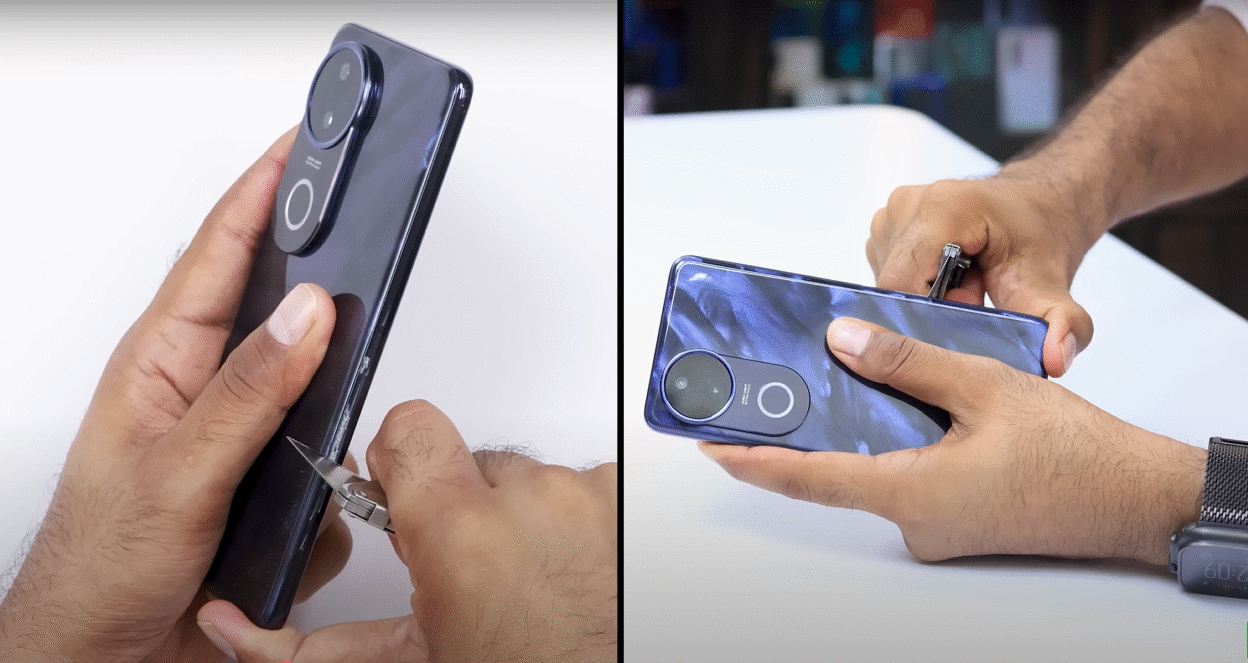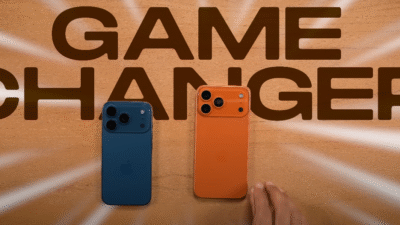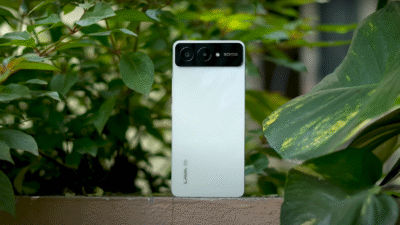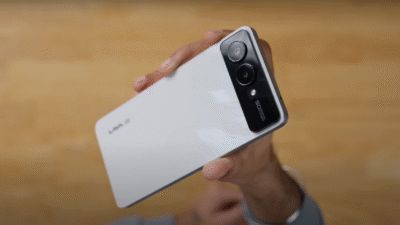The Vivo T4 R, alongside its sibling the iQOO Z10 R, has entered the Indian smartphone market with bold claims of durability, boasting an IP69 rating for water and dust resistance. Priced competitively and available on platforms like Flipkart, this phone promises a premium design and robust build quality. But does it hold up under real-world stress?
A recent YouTube durability test by Gupta Information Systems (Aug 11, 2025) puts the Vivo T4 R through rigorous trials, including scratch tests, water submersion, and a bend test, revealing critical insights about its construction. This detailed blog analyzes the Vivo T4 R’s durability based on the test results, user feedback on X, and industry context, helping you decide if this smartphone is truly built to last in 2025.
Overview of the Vivo T4 R
The Vivo T4 R is marketed as a durable mid-range smartphone with a sleek design and high-end features. Key specifications include:
- IP69 Rating: Protection against high-pressure water jets and dust, theoretically surpassing the IP68 standard.
- Display: AMOLED with a pre-applied screen protector.
- Build: Plastic frame and back panel, with a metallic camera ring.
- Accessories: Includes a charger, USB-C cable, and a lightweight case.
- Price: Approximately ₹20,000–₹25,000 (varies with Flipkart discounts).
The YouTube review highlights its lightweight design and IP69 certification, but durability concerns emerged during testing. Let’s dive into the results of the scratch, water, burn, and bend tests to assess whether the Vivo T4 R lives up to its rugged claims.
Durability Test Results: A Deep Dive
The durability test subjected the Vivo T4 R to real-world scenarios, from scratches to extreme water exposure and structural stress. Here’s a detailed breakdown of the findings.
1. Scratch Test: Display and Back Panel Vulnerabilities
The Vivo T4 R features a Diamond Shield Glass display, but its scratch resistance proved disappointing.
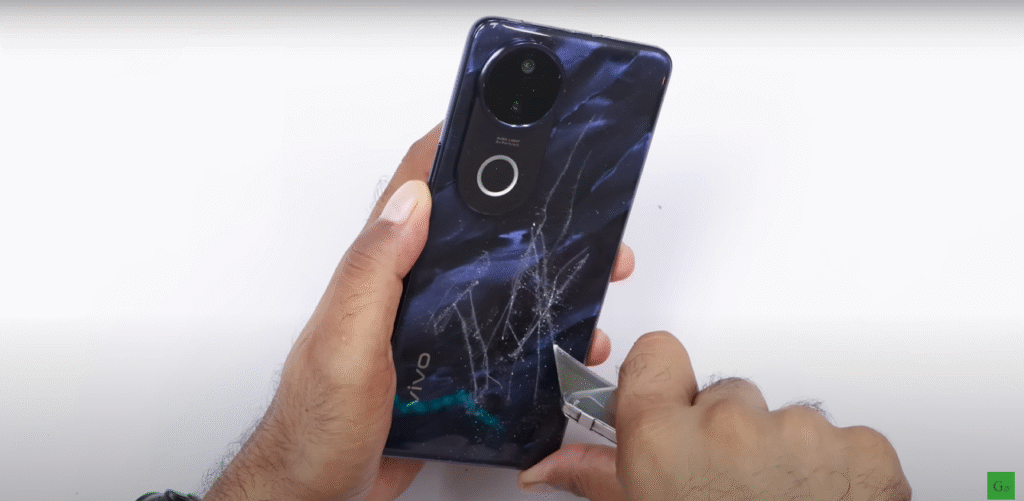
- Display: Hairline scratches appeared at Mohs level 3, with deeper scratches at levels 4–7. This is concerning, as most modern smartphones withstand scratches up to level 6 without visible marks.
- Back Panel: The plastic back panel and camera module also showed scratches at levels 4–7, despite expectations of better glass quality around the camera.
- Comparison: The test compares this to the Vivo X200 FE, which also had a fragile pre-applied screen protector, suggesting a pattern of compromised display durability in Vivo’s recent models.
Verdict: The Vivo T4 R’s display and back panel are prone to scratches from everyday objects like keys or coins, requiring a high-quality screen protector and case for protection.
2. Water Resistance Test: IP69 Put to the Test
The Vivo T4 R’s IP69 rating suggests superior resistance to high-pressure water and dust. The test submerged the phone in a river at a depth of approximately 20–25 feet for 30 minutes under dusty, flowing water conditions.
- Result: After 35 minutes of submersion, the phone emerged fully functional, with no water damage to the display, speakers, or charging port. The test confirms the IP69 rating holds up in extreme conditions, unlike the Vivo X200 FE’s deeper 50–60 feet test in a previous review.
- Context: The reviewer notes that Vivo phones generally perform well in water tests, and the T4 R continues this trend, making it reliable for accidental spills or outdoor use in rain.
Verdict: The Vivo T4 R excels in water resistance, living up to its IP69 certification and offering peace of mind for users in wet environments.
3. Burn Test: AMOLED Display Weakness
To assess heat resistance, the AMOLED display was exposed to a flame for 8 seconds.
- Result: Pixels began to burn and discolor almost immediately, with permanent damage visible. While some recovery occurred, the oleophobic coating was compromised, indicating vulnerability to extreme heat.
- Concern: The reviewer notes that AMOLED burn-in is a common issue, especially in lower-quality displays, and the T4 R’s display is susceptible to discoloration over time, particularly after prolonged heat exposure (e.g., 3–4 years of use).
Verdict: The Vivo T4 R’s display is prone to burn-in under extreme heat, which could lead to long-term discoloration, especially for heavy users.
4. Bend Test: Structural Integrity Concerns
The bend test is a critical measure of a phone’s structural strength, and the Vivo T4 R’s results were alarming.

- Result: When bent from the display side, the phone showed significant flex, with visible damage to the frame. The plastic frame cracked, and the internal motherboard was partially exposed, indicating a weak chassis.
- Comparison: The reviewer references Vivo’s history of compromising build quality for aesthetics and specs, a trend seen in previous models like the Vivo X200 FE.
- Warning: The test advises against carrying the phone in a back pocket, as it’s unlikely to withstand pressure from sitting or accidental bending.
Verdict: The Vivo T4 R’s plastic frame and weak structural design make it highly susceptible to bending damage, a major concern for durability.
5. Accessory Quality: Mixed Results
The test also evaluated the included accessories (charger, cable, and case) for durability.
- Charger and Cable: The USB-C cable and charger were described as “super solid,” with no deformation or stretching during stress tests, suggesting high quality.
- Case: The included case is lightweight but not fully transparent, prone to minor scratches, and offers limited protection. It has a raised edge and cushion gap to absorb drop impacts, but it’s not as durable as premium cases.
- Concern: The case’s susceptibility to scratches and lack of premium materials may not provide adequate long-term protection.
Verdict: While the charger and cable are robust, the case’s average quality means users may need to invest in a better third-party option.
Additional Observations: Build Quality and Design
The Vivo T4 R’s design is sleek but compromises on durability:
- Plastic Frame and Back: The plastic construction reduces weight but feels less premium and is prone to scratches and dents from keys or coins.
- Metallic Camera Ring: The camera module’s metallic ring is a weak point, susceptible to damage during drops or exchanges, potentially lowering resale value.
- Pre-Applied Screen Protector: Like the Vivo X200 FE, the included screen protector is low quality and scratches easily, requiring immediate replacement.
User Feedback on X: Posts highlight the phone’s lightweight feel and attractive design but express concerns about its fragility, with one user noting, “Looks great, but scratches way too easily!”
Comparison Table: Vivo T4 R vs. Competitors
| Feature | Vivo T4 R | iQOO Neo 10 | POCO F7 |
|---|---|---|---|
| Price | ~₹20,000–₹25,000 | ~₹30,000+ | ~₹22,999 |
| Build | Plastic frame, back | Glass back, metal frame | Gorilla Glass, sturdy design |
| Display Protection | Diamond Shield Glass, weak | Gorilla Glass Victus | Gorilla Glass 5 |
| Water Resistance | IP69 (passed 35-min submersion) | IP68 | IP68 |
| Scratch Resistance | Scratches at Mohs level 3–7 | Scratches at level 6–7 | Scratches at level 6–7 |
| Bend Test | Fails, frame cracks | Passes, robust chassis | Passes, strong build |
Verdict: The Vivo T4 R excels in water resistance but falls short in scratch and bend durability compared to the iQOO Neo 10 and POCO F7, which offer sturdier builds.
Should You Buy the Vivo T4 R?
The Vivo T4 R shines in water resistance, making it ideal for users in wet or dusty environments. However, its weak scratch resistance, fragile AMOLED display, and poor structural integrity raise red flags for durability-focused buyers. Here’s a quick guide to help you decide:
- Buy If: You prioritize water resistance (IP69) and need a lightweight phone for outdoor use, with a budget of ₹20,000–₹25,000.
- Avoid If: You need a phone with strong scratch resistance, a durable frame, or long-term display reliability, as competitors like the POCO F7 offer better build quality.
Expert Tip: Invest in a high-quality screen protector and a rugged case immediately to mitigate the phone’s vulnerability to scratches and bending.
Yes, it passed a 35-minute submersion test at 20–25 feet, confirming robust water and dust resistance.
The Diamond Shield Glass scratches at a Mohs level of 3–7, making it prone to damage from keys or coins, and therefore requires a screen protector.
No, the plastic frame cracked during the bend test, and the lightweight case offers limited drop protection, making it fragile.
The Vivo T4 R impresses with its IP69 water resistance, surviving a 35-minute river submersion test, making it a great choice for users in challenging environments. However, its poor scratch resistance, fragile AMOLED display, and weak plastic frame revealed in the bend test highlight significant durability concerns. For those prioritizing build quality, alternatives like the iQOO Neo 10 or POCO F7 offer sturdier designs. If you’re considering the Vivo T4 R, protect it with a premium case and screen protector. Check it out on Flipkart or share your thoughts on X.
